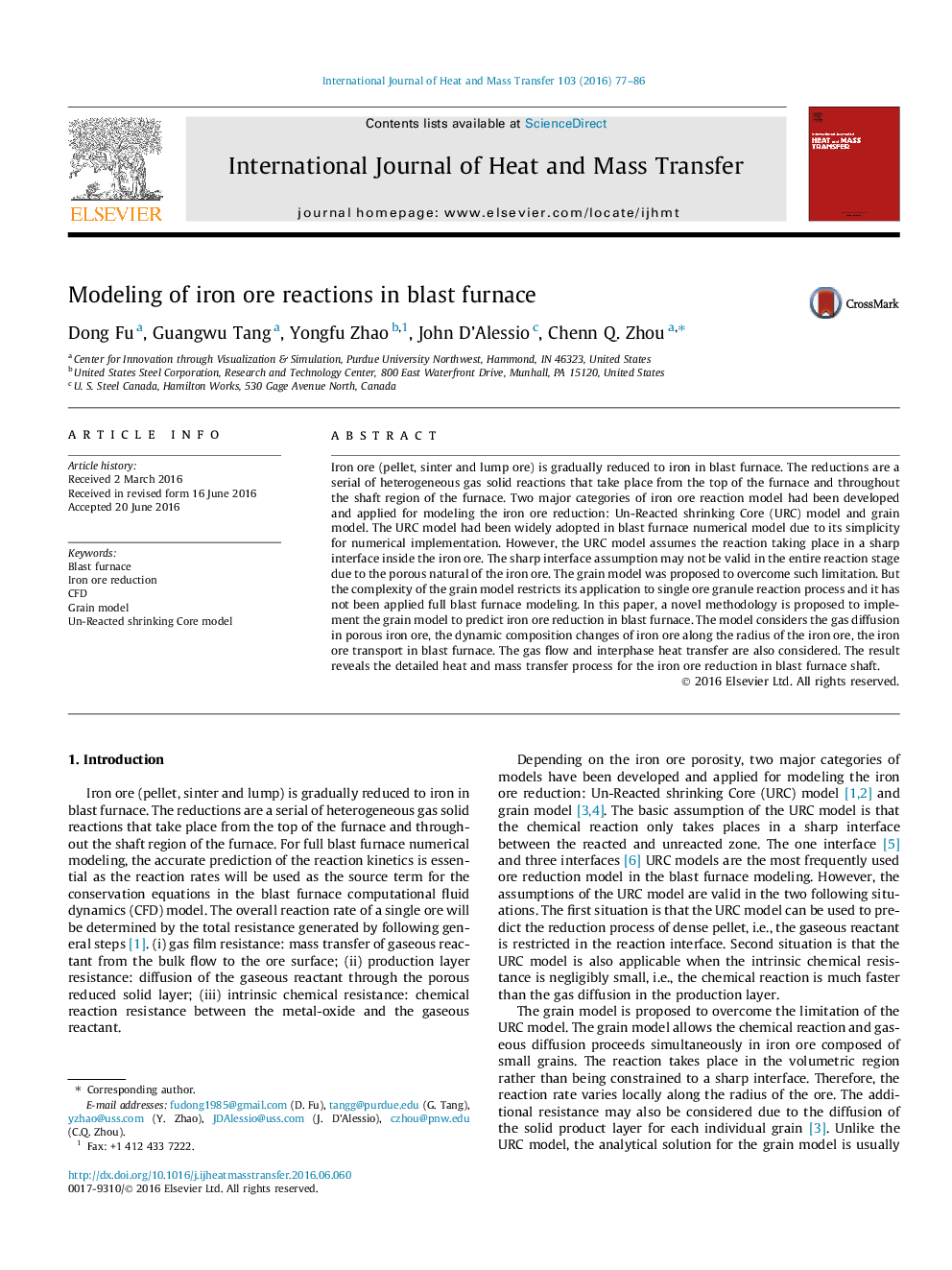| Article ID | Journal | Published Year | Pages | File Type |
|---|---|---|---|---|
| 7054947 | International Journal of Heat and Mass Transfer | 2016 | 10 Pages |
Abstract
Iron ore (pellet, sinter and lump ore) is gradually reduced to iron in blast furnace. The reductions are a serial of heterogeneous gas solid reactions that take place from the top of the furnace and throughout the shaft region of the furnace. Two major categories of iron ore reaction model had been developed and applied for modeling the iron ore reduction: Un-Reacted shrinking Core (URC) model and grain model. The URC model had been widely adopted in blast furnace numerical model due to its simplicity for numerical implementation. However, the URC model assumes the reaction taking place in a sharp interface inside the iron ore. The sharp interface assumption may not be valid in the entire reaction stage due to the porous natural of the iron ore. The grain model was proposed to overcome such limitation. But the complexity of the grain model restricts its application to single ore granule reaction process and it has not been applied full blast furnace modeling. In this paper, a novel methodology is proposed to implement the grain model to predict iron ore reduction in blast furnace. The model considers the gas diffusion in porous iron ore, the dynamic composition changes of iron ore along the radius of the iron ore, the iron ore transport in blast furnace. The gas flow and interphase heat transfer are also considered. The result reveals the detailed heat and mass transfer process for the iron ore reduction in blast furnace shaft.
Related Topics
Physical Sciences and Engineering
Chemical Engineering
Fluid Flow and Transfer Processes
Authors
Dong Fu, Guangwu Tang, Yongfu Zhao, John D'Alessio, Chenn Q. Zhou,
